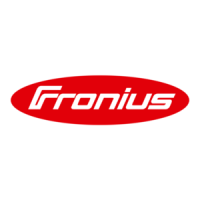16
EMF measures
Specific hazards
Check for possible problems, and check and evaluate neighbouring devices'
resistance to interference according to national and international require-
ments:
- Safety features
- power, signal and data transfer lines
- IT and telecommunications devices
- measuring and calibrating devices
Supporting measures for avoidance of EMC problems:
a) Mains supply
- if electromagnetic interference arises despite correct mains connec-
tion, additional measures are necessary (e.g. use a suitable line fil-
ter).
b) Welding leads
- must be kept as short as possible
- must run close together (to avoid EMF problems)
- must be kept well apart from other leads
c) Equipotential bonding
d) Earthing the workpiece
- if necessary, establish an earth connection using suitable capacitors.
e) Shielding, if necessary
- shield off other nearby devices
- shield off entire welding installation
Electromagnetic fields may pose as yet unknown risks to health:
- effects on the health of others in the vicinity, e.g. wearers of pacemakers
and hearing aids
- wearers of pacemakers must seek advice from their doctor before ap-
proaching the device or any welding that is in progress
- for safety reasons, keep distances between the welding cables and the
welder's head/torso as large as possible
- do not carry welding cables and hosepacks over the shoulders or wind
them around any part of the body
Keep hands, hair, clothing and tools away from moving parts. For example:
-Fans
- Cogs
- Rollers
-Shafts
- Wirespools and welding wires
Do not reach into the rotating cogs of the wire drive or into rotating drive com-
ponents.
Covers and side panels may only be opened/removed while maintenance or
repair work is being carried out.
During operation
- ensure that all covers are closed and all side panels are fitted properly.
- keep all covers and side panels closed.

